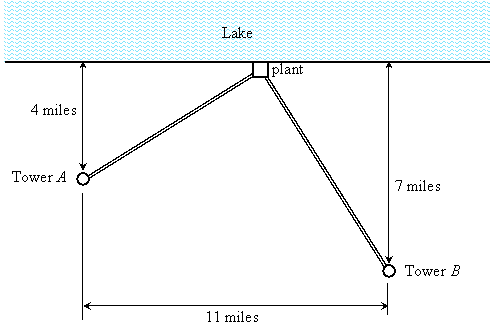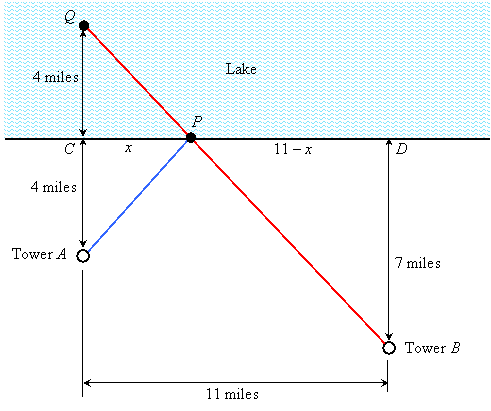- Prev
- Page 6 of 6
Application
A county plans to build a new water plant on the shore of a long lake. Water will be piped to two different water towers located according to the following map:

Where should the plant be located so the sum of the distances from the two water towers is as small as possible?
Solution:
Extend the vertical line from Tower A into the lake an equal distance beyond the shore-line to point Q, then draw a segment from Q to Tower B, and let P be the point where this segment crosses the shore-line. Then draw a segment from P to A:

Notice that segments QP and AP have the same length. In addition, QB is the shortest distance from Q to B. But QB = QP + PB = AP + PB. So the water plant should be located at point P.
To find distances, notice that the right triangles QCP and BDP are similar (because the vertical angles at P are congruent), so we can solve the following ratio to find x:
![]()
Cross-multiply: ![]() , so
, so ![]() , and x = 4. So the water plant should be located 4 miles right of where the perpendicular from Tower A meets the shore-line.
, and x = 4. So the water plant should be located 4 miles right of where the perpendicular from Tower A meets the shore-line.